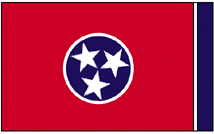[« More Talibanization of Women's Rights...] [Vlad-the-Impaler Pirouettes… »]
08/13/2005: Inter-Island Trading Networks...
More from "Collapse" by Jared Diamond: Here is yet another technique about the pain-staking effort and science used to determine the characteristics and conditions of these past Societies and observations about what probably led to their demise. I will have a finale wrap up and concluding observations from “Collapse” tomorrow.
To read this bit about volcanic analysis and the significance of the inter-island trading in Southeast Polynesia on Mangareva, Pitcairn and Henderson Islands, click on the “more” button.
"Weisler’s archaeological excavations uncovered extensive evidence of trade among all three islands [Pitcairn, Henderson, Mangareva - Southeast Polynesia], whereby each island’s deficiencies were filled by other islands’ surpluses. Trade objects, even those (such as ones of stone) lacking organic carbon suitable for radiocarbon dating, can still be dated by radiocarbon measurements on charcoal excavated from the same archaeological layer. In that way, Weisler established that trade began at least by the year A.D. 1000, probably simultaneously with the first settlement by humans and continued for many centuries. Numerous objects excavated at Weisler’s sites on Henderson could be immediately identified as imports because they were made of materials foreign to Henderson: oyster shell fishhooks and vegetable peelers, volcanic glass cutting tools and basalt adzes and oven stones.
…A reasonable guess is that the oyster shell fishhooks and vegetable came from Mangareva because oysters are abundant there but absent on Pitcairn and Henderson…But it is a much more difficult problem to identify origins of the volcanic stone artifacts on Henderson, because both islands Mangareva and Pitcairn, as well as many other distant Polynesian islands have volcanic sources.
Hence Weisler developed or adapted techniques for discriminating among volcanic stones from different sources. Volcanoes spew out many different types of lava, of which basalt (the category of volcanic stone occurring on Mangareva and Pitcairn) is defined by its chemical composition and color. However, basalts from different islands, and often from different quarries on the same island, different from each other in finer details of chemical composition, such as their relative content of major elements (like silicon and aluminum) and minor elements (like niobium and zirconium).
An even finer discriminating detail is that the element of lead occurs naturally as several isotopes (i.e., several forms differing slightly in atomic weight), whose proportions also differ from one basalt source to another. To a geologist, all these details of composition constitute a fingerprint that may allow one to identify a stone tool as coming from one particular island or quarry.
So why is this scientific technique important and what did these archaeologist learn from this? And, more critically: What does this scenario have to do with us today?:”
The conclusions emerging from these analyses were unequivocal….In short, archaeological studies have now documents a former flourishing trade in raw materials and possibly finished tools [between Pitcairn, Henderson and Mangareva]…. Mangareva, it turns out, was the geographic hub of a much larger trade net work, of which the ocean journey to Pitcairn and Henderson a few hundred miles to the southeast was the shortest spoke.
…
Mangareva was especially susceptible to deforestation [a critical environmental damage] for most of the reasons I identified for Easter Island in the preceding chapter; high latitude, low ash and dust fallout, and so on….
…
With too many people and too little food, Mangareva society slid into a nightmare of civil war and chronic hunger, whose consequences are recalled in detail by modern islanders….
…
Thus, environmental damage, leading to social and political chaos and loss of timber for canoes, ended Southeast Polynesia’s inter-island trade. The end of trade would have exacerbated problems for Mangarevans, now cut off from Pitcairn, Marqueseas and Societies sources of high-quality stone for making tools. For the inhabitants of Pitcairn and Henderson, the results were even worse, eventually not one was left alive on those islands.
…
Mangareva Islanders were numerous enough to survive, albeit under chronically terrifying conditions and with a drastically reduced standard of living. But even from the very beginning, even before the accumulation of environmental damage, the inhabitants of Pitcairn and Henderson had remained dependant on imports of agricultural products, technology, stone, oysters, and people from their mother population on Mangareva. With Mangareva’s decline and its; inability to sustain exports, not even the most heroic effort to adapt could save the last people alive on Pitcairn and Henderson.
Lest those islands still seem too remote in space and time to be relevant to our modern society, just think about the risks (as well as the benefits) of our increasing globalization and increasing worldwide economic interdependence. Many economically important but fragile areas (think of oil) already affect the rest of us, just as Mangareva affected Pitcairn and Henderson.”
Karen on 08.13.05 @ 08:21 AM CST










